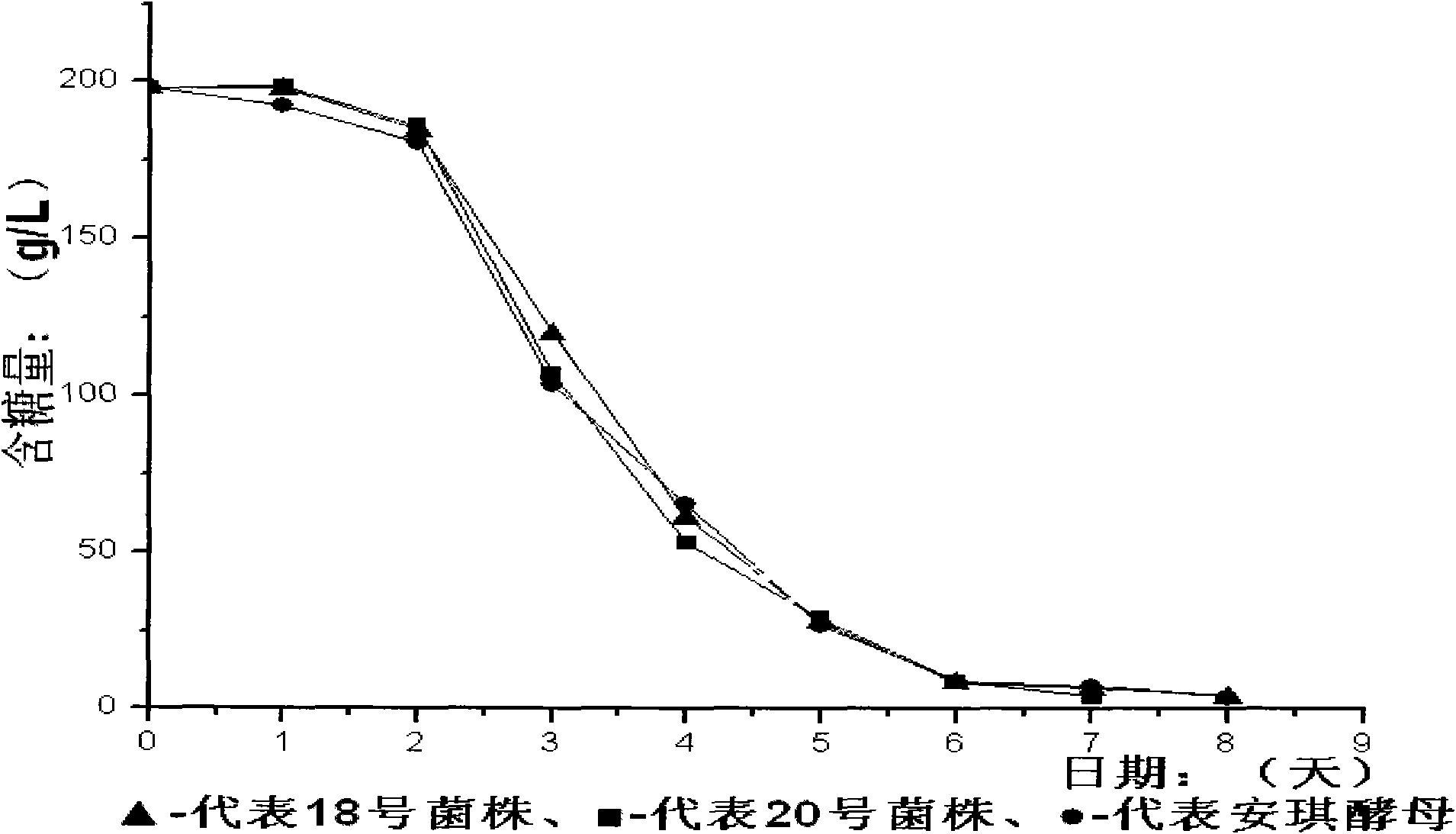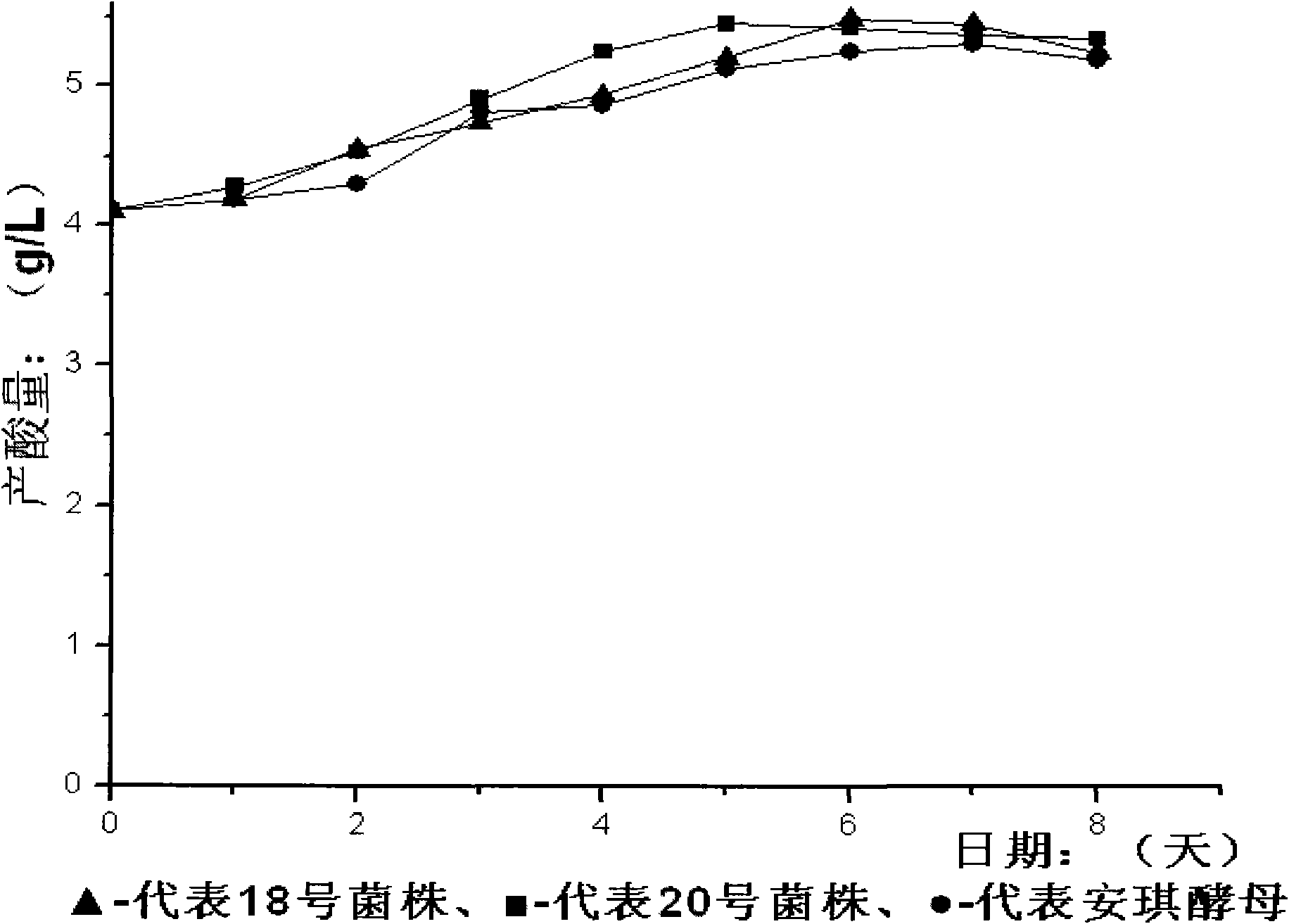Saccharomyces cerevisiae for brewing pomegranate fruit wine and pomegranate wine prepared by fermentation
A technology for Saccharomyces cerevisiae and pomegranate wine, which is applied in the field of pomegranate wine, can solve the problems of separation and screening of special yeast for pomegranate fruit wine and the application research has not yet been reported, and achieves the effects of excellent fermentation performance, good fruit aroma and long aftertaste.
- Summary
- Abstract
- Description
- Claims
- Application Information
AI Technical Summary
Problems solved by technology
Method used
Image
Examples
Embodiment 1
[0048] Example 1: Isolation, screening and purification of yeast strains
[0049] 1. Collection of yeast isolation source:
[0050] The principle of random sampling was used to collect fresh pomegranates, rotten pomegranates, pomegranate leaves and their soils from pomegranate gardens in the surrounding cities of Kashgar, Xinjiang. A total of 24 pomegranate samples, 12 pomegranate leaf samples and 8 pomegranate garden soil samples were collected, which were put into sterile in a paper bag and stored in a refrigerator at 4°C for later use.
[0051] 2. Bacteria separation method:
[0052] Yeasts were isolated using different medium types, alcohol concentrations, incubation temperatures, and pH values to maximize the sample size. The enrichment and separation conditions are as follows:
[0053] A. Take an appropriate amount of samples and add them to the sterilized PDA and YPD mediums containing 3%, 6%, 9%, and 12% ethanol, respectively, at the natural pH value, and culture ...
Embodiment 2
[0086] Example 2: Identification of yeast strains
[0087] 1. Morphological identification of yeast
[0088] A. Morphology and culture characteristics:
[0089] Inoculate the strains into PDA liquid medium, cultivate at 28°C for 3-7 days, observe whether fermentation, whether the culture medium is turbid, whether rings or islands are formed, the amount of sediment and the tightness, and stained for observation under a microscope, and record the yeast. Asexual reproduction mode and cell shape, measure the size of vegetative cells with an eyepiece micrometer, streak yeast on PDA solid medium, cultivate at 30°C for 2-3 days, and observe its colony morphology:
[0090] The SL20 strain was cultured in PDA liquid medium for 3-7 days, the cells were oval, the walls of the triangular flask had no membrane or webs, the cell size was (3.02-7.05) × (1.66-3.17) μm, and the asexual reproduction method was budding at one end. Colonies grown on PDA solid medium were milky white, creamy, sm...
Embodiment 3
[0103] Embodiment 3: Basic wine-making performance test of yeast strain
[0104] 1. Fermentation characteristics of self-selected yeast under different temperature conditions (with Angel yeast as the control):
[0105] The selected yeast strains were fermented for pomegranate wine at three temperatures of 20°C, 25°C and 30°C, while Angel active dry yeast was used as the control strain, and each was repeated three times. see attached Figure 1-4 .
[0106] Strain activation: Yeast was first shaken cultured in 50mL PDA liquid medium for 10h, and then transferred to a 50mL conical flask containing 10°Brix pomegranate juice for further expansion for 10h. Angel active dry yeast was rehydrated and activated in 2% sugar water at 35°C as required, and then transferred to a 50mL conical flask containing 10°Brix pomegranate juice for continued expansion for 10h.
[0107] Inoculum size: 1% of pomegranate juice.
[0108] Treatment of pomegranate juice: Sterilization of pomegranate jui...
PUM
 Login to View More
Login to View More Abstract
Description
Claims
Application Information
 Login to View More
Login to View More - R&D
- Intellectual Property
- Life Sciences
- Materials
- Tech Scout
- Unparalleled Data Quality
- Higher Quality Content
- 60% Fewer Hallucinations
Browse by: Latest US Patents, China's latest patents, Technical Efficacy Thesaurus, Application Domain, Technology Topic, Popular Technical Reports.
© 2025 PatSnap. All rights reserved.Legal|Privacy policy|Modern Slavery Act Transparency Statement|Sitemap|About US| Contact US: help@patsnap.com



